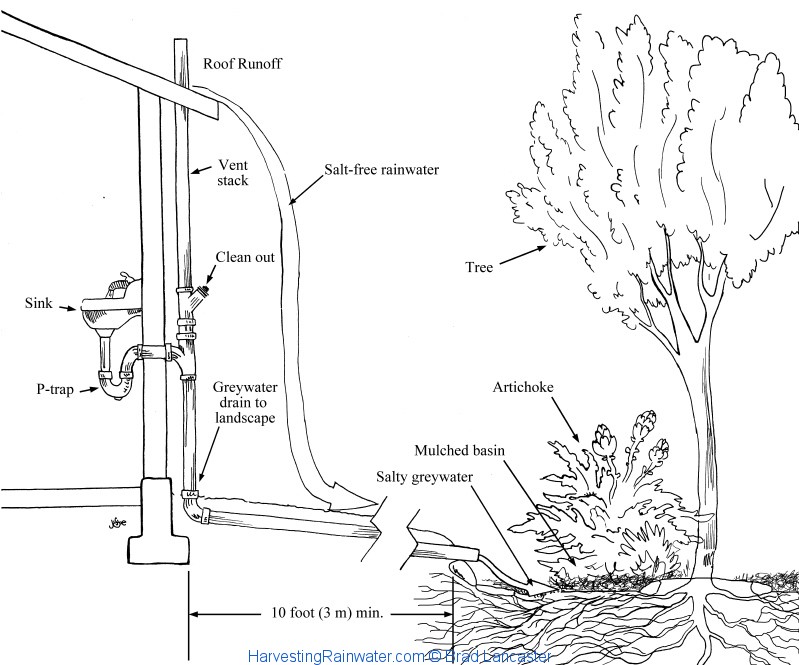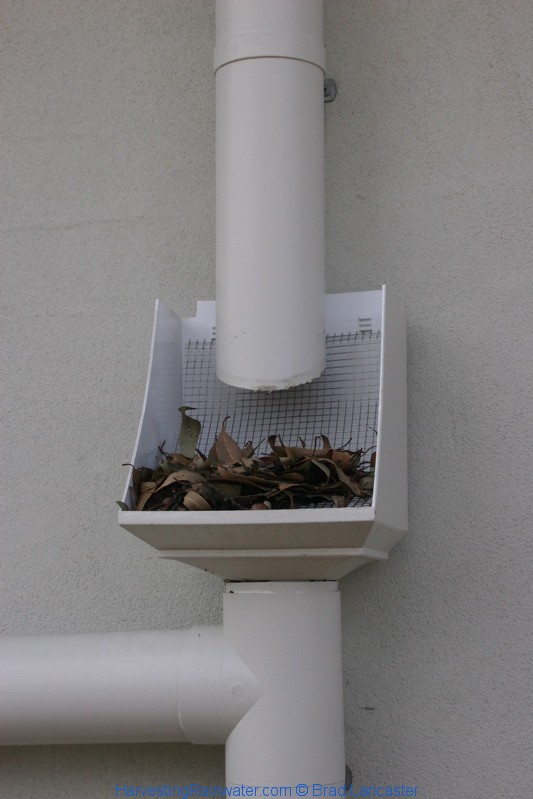Collecting rain water and filtering it is much easier than it sounds. It just involves some filters and a good design.
There is more than one way to use your grey water. From Gutter collection, sink runoff, barrels around the home to collect the rain. It will take the load off the local sewage system and feed your garden during the dry months.
This is a great resource site that gives detailed helpful hints from tax breaks to installation tricks.
For example, Using grey water from your sink requires you to use biodegradable soap or you will kill your plants.
The Eight Principles of Successful Water Harvesting
1. Begin with long and thoughtful observation.
What is working, what is not? Build on what works.
2. Start at the top (highpoint) of your watershed and work your way down.
Water travels downhill, so collect water at your high points for more immediate infiltration and easy gravity-fed distribution.
3. Start small and simple. Work at the human scale so you can build and repair everything.
4. Slow, spread, and infiltrate the flow of water. encourage it to stick around, “walk” around, and infiltrate into the soil.
5. Always plan an overflow route, and manage that overflow as a resource.
Always have an overflow route for the water in times of extra heavy rains,
6. Maximize living and organic groundcover. Create a living sponge so the harvested water is used to create more resources,
7. Maximize beneficial relationships and efficiency by “stacking functions.”
Get your water harvesting strategies to do more than hold water. Berms can double as high-and-dry raised paths. Plantings can be placed to cool buildings in summer. Vegetation can be selected to provide food.
8. Continually reassess your system: the “feedback loop.”
Observe how your work affects the site, beginning again with the first principle.





No comments:
Post a Comment